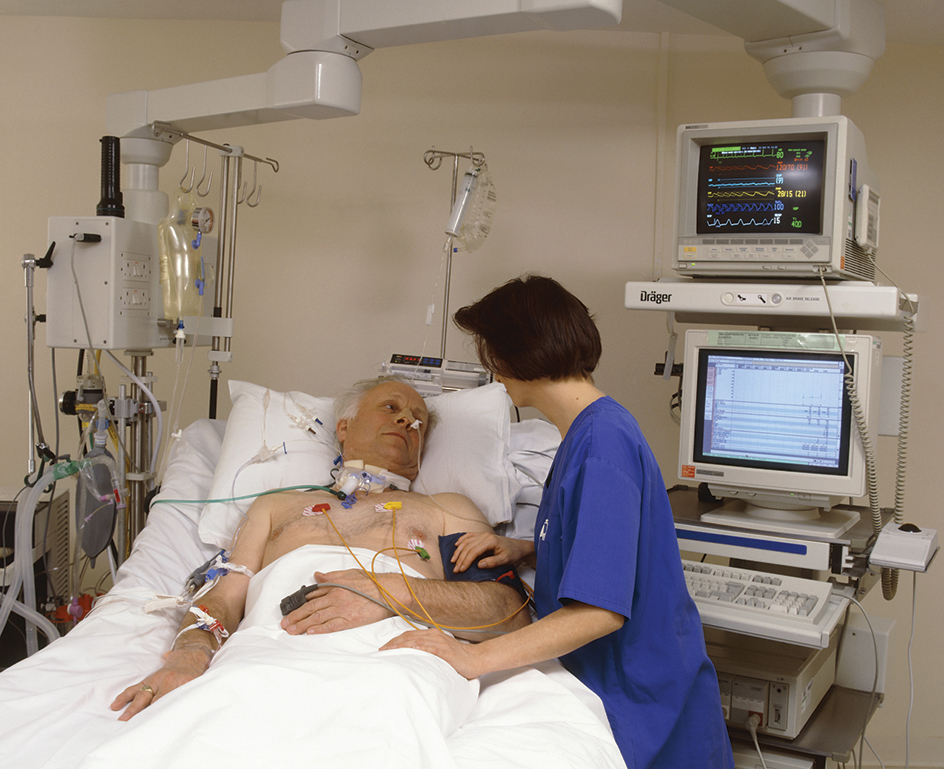Intensive care unit is a section of a hospital in which highly skilled health-care workers provide constant attention and extensive treatment for critically ill patients. There are several specialized types of intensive care units, often called ICU’s. The main types are medical ICU’s, which care for adults with critical illnesses; surgical ICU’s, whose patients have had or are being prepared for major operations; pediatric ICU’s, for babies and children; and coronary care units (CCU’s), for adults with heart problems.

An ICU patient who cannot eat or drink may receive a nutrient solution intravenously (by vein). The solution of water mixed with sugars and salts may also include vitamins, amino acids (the building blocks of proteins), fats, or medicines. A bag of the solution hangs on a pole, and the liquid drips through tubes into the patient’s vein. Another tube may go through the nose and throat into the stomach.
If the patient cannot breathe, a respirator alongside the bed does the breathing. The respirator is connected to the patient through tubing, which enters the windpipe through the nose, mouth, or a surgically created hole in the neck. Special patches that sense the heartbeat are attached to the patient’s skin. They are wired to a screen that shows the pattern of heartbeats and the number of beats per minute. If the heartbeat becomes irregular, alarms sound to summon health-care workers. Alarms also go off if fluids stop going into the patient’s vein, if the respirator fails, or if there is difficulty with any other equipment.
